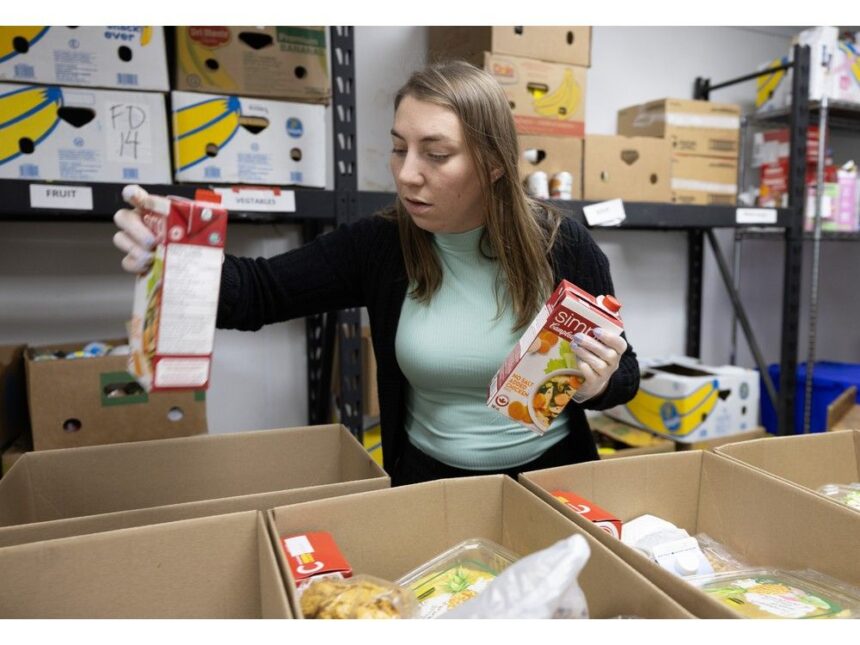Anastasia Payne fills some boxes at the Parker Street Food & Furniture Bank on Friday. Photo by Ryan Taplin /The Chronicle HeraldArticle contentFood banks in Nova Scotia are seeing an increase in traffic, according to a recent report that recorded almost 2.2 million visits nationwide. THIS CONTENT IS RESERVED FOR SUBSCRIBERS ONLY.Subscribe now to access this story and more:Unlimited access to the website and appExclusive access to premium content, newsletters and podcastsFull access to the e-Edition app, an electronic replica of the print edition that you can share, download and comment onEnjoy insights and behind-the-scenes analysis from our award-winning journalistsSupport local journalists and the next generation of journalistsSUBSCRIBE TO UNLOCK MORE ARTICLES.Subscribe or sign in to your account to continue your reading experience.Unlimited access to the website and appExclusive access to premium content, newsletters and podcastsFull access to the e-Edition app, an electronic replica of the print edition that you can share, download and comment onEnjoy insights and behind-the-scenes analysis from our award-winning journalistsSupport local journalists and the next generation of journalistsRegister to unlock more articles.Create an account or sign in to continue your reading experience.Access additional stories every monthShare your thoughts and join the conversation in our commenting communityGet email updates from your favourite authorsSign In or Create an AccountorArticle contentThe Food Banks Canada 2025 Hunger Count, released in October, says that within Nova Scotia there were 43,421 visits to food banks over one month this year, with children accounting for one-third of the visitors. Article contentArticle contentThe total is a 10.3 per cent increase in visits from 2024 to 2025. Article contentArticle contentRichard Matern, director of research for Food Banks Canada, said Nova Scotia’s rise is in line with trends across Canada. Article content“Nationally, we’re seeing a five per cent increase compared to last year. In Nova Scotia, it was a 10 per cent increase in visits,” he said, adding that the growth reflects widening “gaps in our social security net” and cumulative impacts of the rising cost of living.Article content Jeff Brooks and Carter Ducharme fill up food boxes at Parker Street Food and Furniture Bank in January 2024. Photo by Ryan Taplin /The Chronicle HeraldArticle contentWho food banks serve has been changing, as well. The report highlights a growing number of working people using food banks, with 19 per cent of clients nationally reporting employment as their main source of income. Article contentMatern said part of the reason for that increase is inflation for food and housing. That’s climbed about 25 per cent since 2021, while wage growth sits at about 17 per cent. Article content“Work is becoming less of a guarantee against poverty,” he said. “People’s savings are being eroded because they’re spending more of their cushions. to be able to afford daily living.” Article contentArticle contentIn Halifax, Parker Street Food & Furniture Bank communications co-ordinator Anastasia Payne said many first-time users are coming through the doors. Article contentArticle content“We are definitely seeing an increase in clients coming into Parker Street.” Article contentShe said they have seen more people who have a “decent” income. Article content“We see a lot of two-parent families coming in, which is new.” Article contentParker Street uses an appointment system for those accessing their services and has the capacity to serve about 350 clients a week. Article content“Otherwise, we would just have lines around the block,” Payne said.Article contentThe Food Banks Canada report highlights that it’s not only food costs causing more people to rely on food banks. Matern said the link between housing and hunger has become hard to ignore. According to the Hunger Count report, households in the lowest income bracket spent around 66 per cent of their disposable incomes on rent.
Nova Scotia food banks at their limits as demand rises












